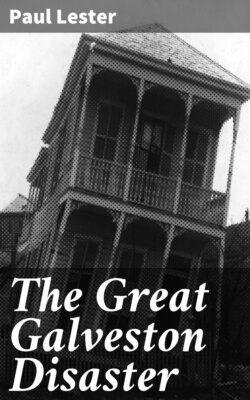Читать книгу The Great Galveston Disaster - Paul Lester - Страница 75
На сайте Литреса книга снята с продажи.
NOT MEN ENOUGH TO HANDLE THE DEAD.
ОглавлениеTable of Contents
Further details of the great disaster were as follows: The citizens of Galveston are straining every nerve to clear the ground and secure from beneath the debris the bodies of human beings and animals and to get rid of them. It is a task of great magnitude and is attended with untold difficulties. There is a shortage of horses to haul the dead and there is a shortage of willing hands to perform the gruesome work. It became apparent that it would be impossible to bury the dead, even in trenches, and arrangements were made to take them to sea.
Barges and tugs were quickly made ready for the purpose, but it was difficult to get men to do the work. The city’s firemen worked hard in bringing bodies to the wharf, but, outside of them, there were few who helped. Soldiers and policemen were accordingly sent out, and every able-bodied man they found was marched to the wharf front. The men were worked in relays, and were supplied with stimulants to nerve them for their task.
At nightfall three barge loads, containing about 700 human bodies, had been sent to sea, where they were sunk with weights. Darkness compelled suspension of the work until morning. Toward night great difficulty was experienced in handling the bodies of negroes, which are badly decomposed.
No effort was made after 9 o’clock in the morning to place the bodies in morgues for identification, for it was imperative that the dead should be gotten to sea as soon as possible. Many of the bodies taken out are unidentified. They are placed on the barges as quickly as possible and lists made while the barges are being towed to sea.
A large number of dead animals were hauled to the bay and dumped in, to be carried to sea by the tides.
